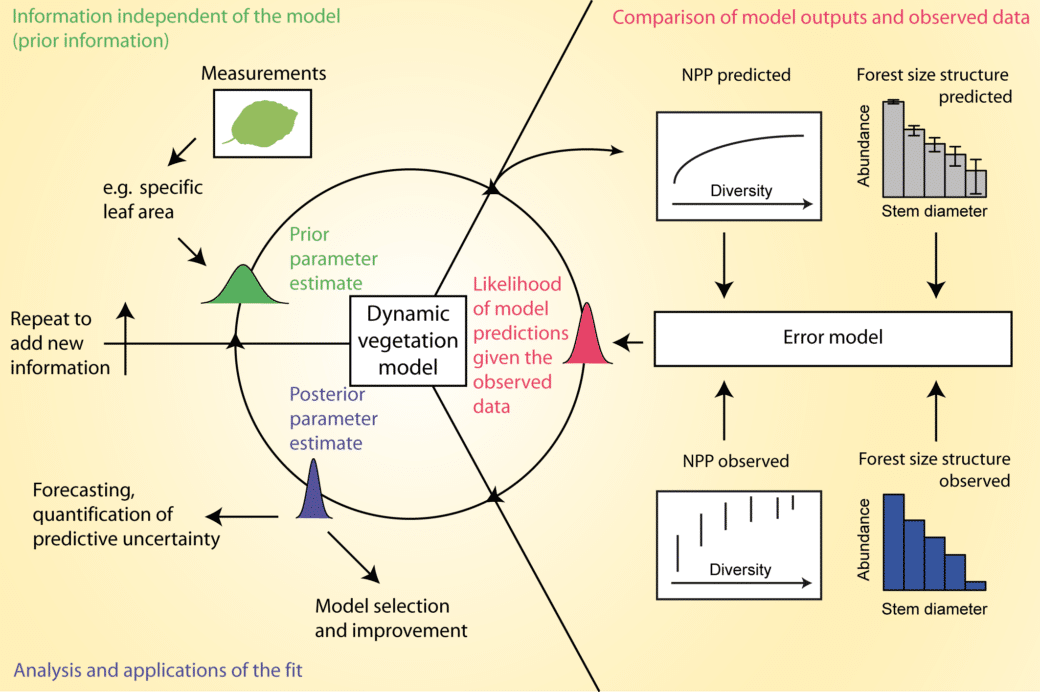Testing mechanistic interactions between biodiversity, land use and ecosystem functions with a process-based vegetation model

The empirical data of the DFG Biodiversity Exploratories demonstrate the influence of diversity and land use on ecosystem functions and ecosystem services. However, the exact mechanisms that generate this influence are in many cases not finally clarified. Understanding these questions is not only useful for basic research in ecology – without a mechanistic understanding of the observed effects, it is difficult to extrapolate the data from the exploratories to other environmental conditions, for example to enhanced climate change.
The aim of this project is to investigate the existence and relative strength of mechanisms hypothesised to explain the observed dependencies of biodiversity, land use and ecosystem functions. Mechanisms of particular interest are:
- Niche differentiation through different growth strategies / light.
- Niche differentiation through different root strategies / water use
- Niche differentiation through different nutrient use
- Influence of intraspecific variability
The project will use the LPJ-GUESS model, a best known and well tested process-based forest model. LPJ-GUESS can be used to model the functional differences described above, e.g. through different tree allometries and different physiological parameters. We will use Bayesian statistics and data from the exploratories to fit the model parameters to the local site conditions.
We will then use the model to test two main questions:
- How do the mechanisms described above influence species richness and functional diversity between and within experimental plots, and to what extent can they therefore explain the observed diversity of functions and species in the Biodiversity Exploratories?
- What is the contribution of these mechanisms to the observed diversity effects in the exploratoria?









